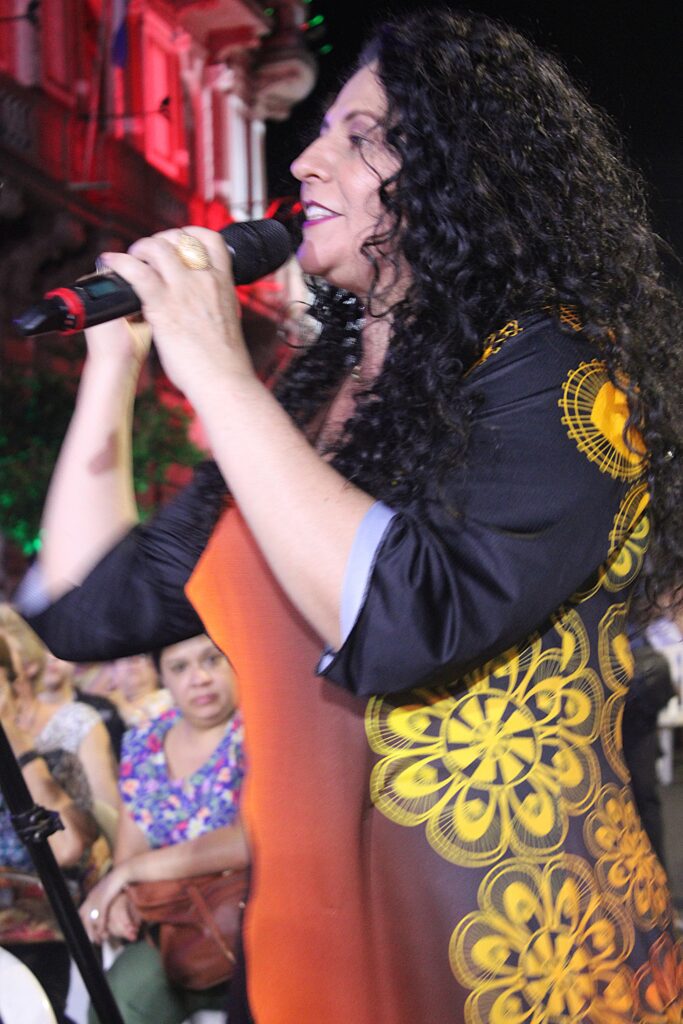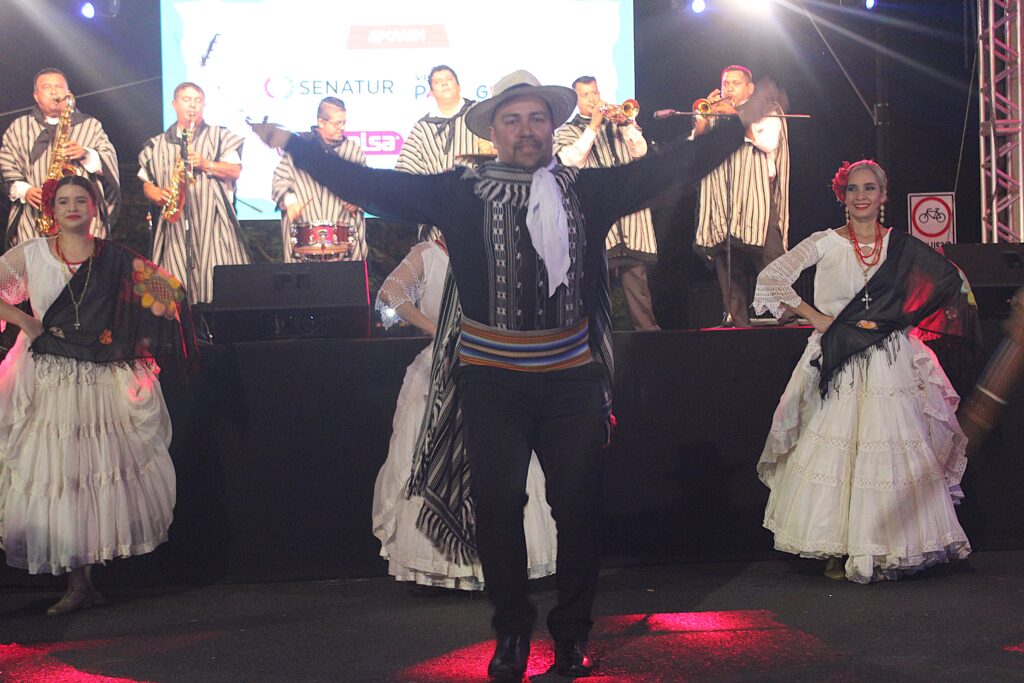This Tuesday was held the seventh edition of the cultural event “Guarania, Polca Ha Chamamé” in front of the Cañas Paraguayas Sociedad Anónima (CAPASA) building, at the other end of Calle Palma. The event was organised by the singer Myrian Beatriz Ruiz with the help of the CAPASA and Aristócrata, their president José Ocampos, and the Municipality of Asunción. This year, the activity was declared of cultural interest by the Chamber of Deputies, the National Secretariat of Culture, and municipal interest by the Municipality of Asunción.
The cultural event, which was free to attend, gathered thousands of people to listen to the songs and dances to the traditional music from Paraguay and Northern Argentina. Apart from Myrian Beatriz and her group, performers present were Roscer Díaz, Los Pibes del Chamamé, the band, the ballet and the folkloric group of the Municipality of Asunción, and ballet dancers Tanya Olmedo and Mario Quiñónez. Representatives from Corrientes, Argentina, were Lucas Rojas and Noemí Maizares. While the music and dance were one, there was a free tasting of Cañas Paraguayas products and many new things for all those present. The museum was also open to the public during this wonderful cultural event.


The music was excellent. I had never had the chance to immerse myself much in these styles of music before, and I adored them. The artists and dancers were energetic, and the music was very engaging. The voice of Myrian Beatriz was enchanting, and Los Pibes del Chamamé know how to elevate a party! A number of “bottle dance” was also performed, reaching around a dozen bottles on her head. That night, I fell in love with Paraguay again. “Upéva ha’e pe Paraguái añetegua.” This celebration of the Paraguayan culture is the perfect event for foreigners to connect with their new country of residence.
The guarania, the Paraguayan polka, and the chamamé are important components of the Paraguayan and Northern Argentinian culture. The guarania was created by one of the greatest musicians in the history of Paraguay, José Asunción Flores, in 1925. Events will be organized next year to celebrate the anniversary—details will be announced later. This music is usually of a slower pace, with slow rhythm and melodies. People in the city prefer this style of music, and people in more rural regions prefer the Paraguayan polka, which has a faster pace. The difference between European and Paraguayan polka is that they use a binary rhythm in Europe as Paraguay combines binary and ternary rhythms. As for the chamamé, it is based on the schottische, a bohemian dance from Eastern Europe, with people playing the guitar and the accordion while the others are dancing all together. Immigrants from Central and Eastern Europe brought this style to South America more than 100 years ago. Over time, the chamamé got a Guaraní influence in Paraguay and Northern Argentina, thus being a different style.


That is not all. From the 17th to the 26th of January in Corrientes, in Northern Argentina, the Festival Nacional del Chamamé will be held. It will be at the Anfiteatro Mario del Tránsito Cocomarola, and from the first days of 2025 at different points of the city of Corrientes and the provincial interior. If you cannot go to Argentina or are not in Paraguay yet, you can listen to the Spotify playlist named Chamamé Bailable. ¡Jagueromandu’a Paraguáipe ñahenduvevo Chamamé!



